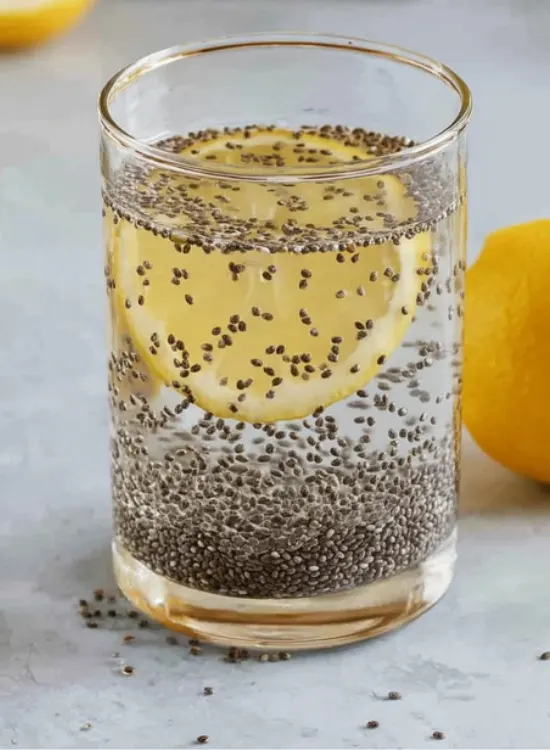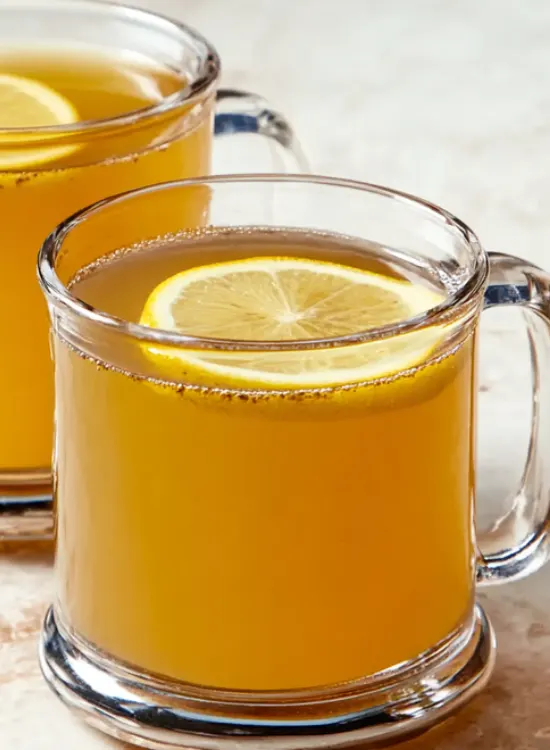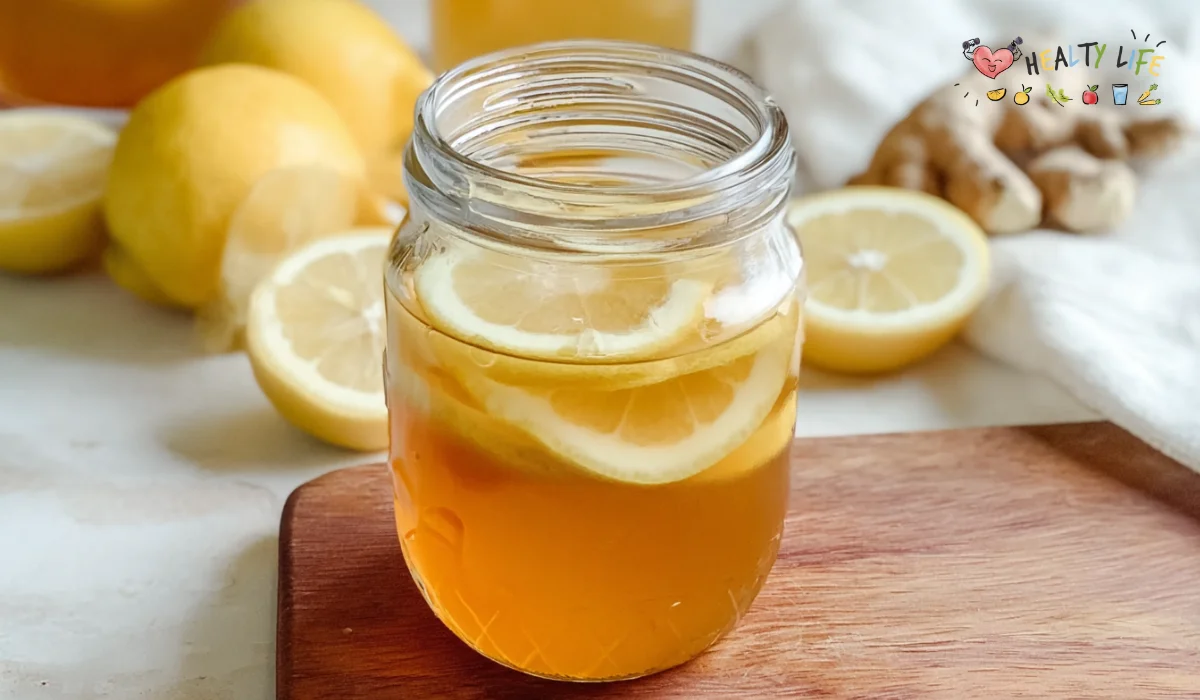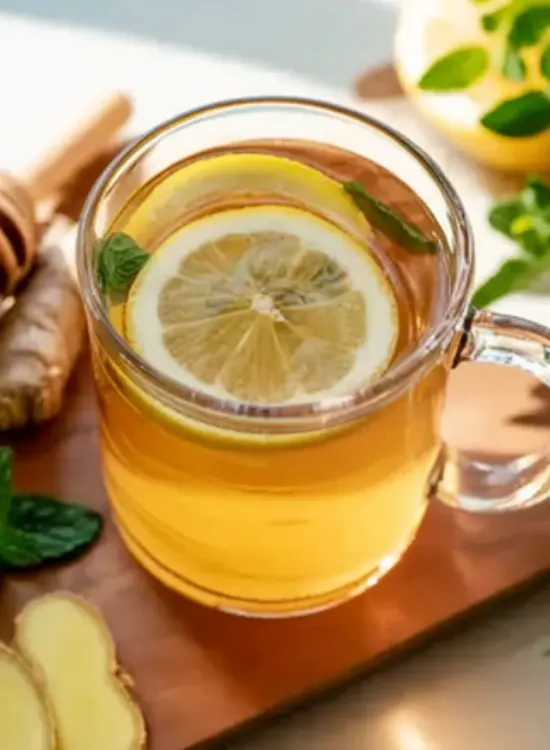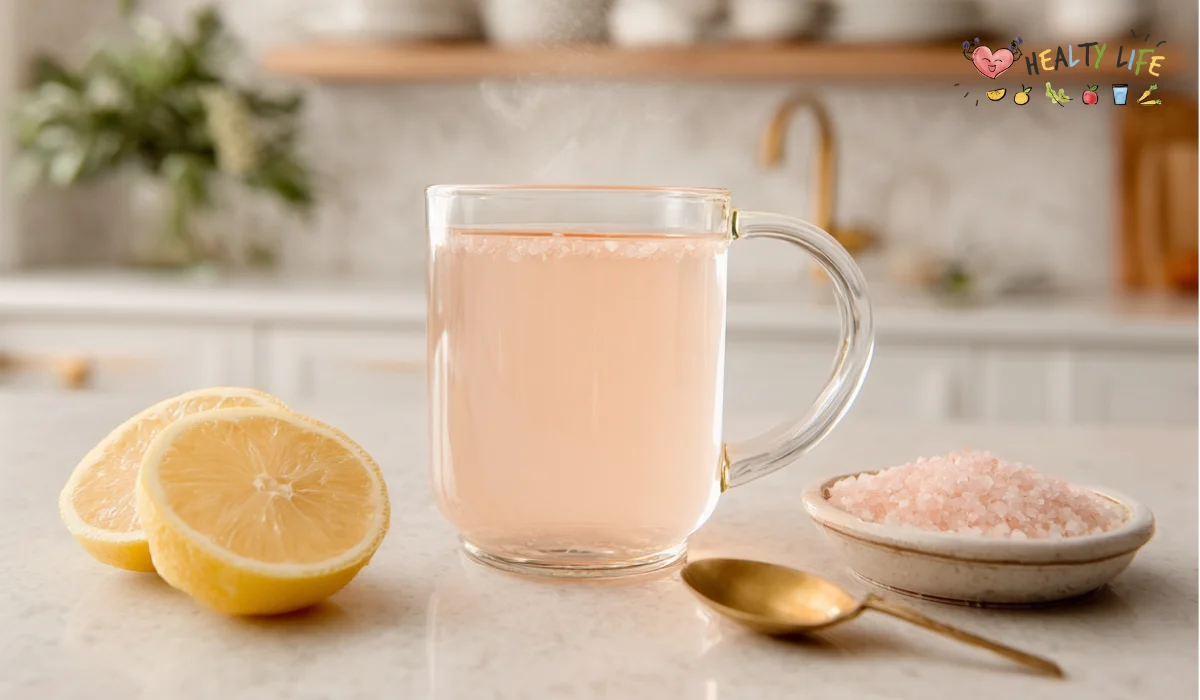At 3:47 AM on a humid August morning, I stood in my sage green kitchen staring at a peculiar combination of pineapple rinds, ginger root, and lemongrass that would completely transform my approach to natural weight loss. My client Rebecca had just returned from her honeymoon in Costa Rica, raving about a traditional tea that helped her feel lighter and more energized than she had in years. “Emma,” she texted me at midnight, “you have to try this Costa Rican tea recipe – it’s like nothing I’ve ever experienced.”
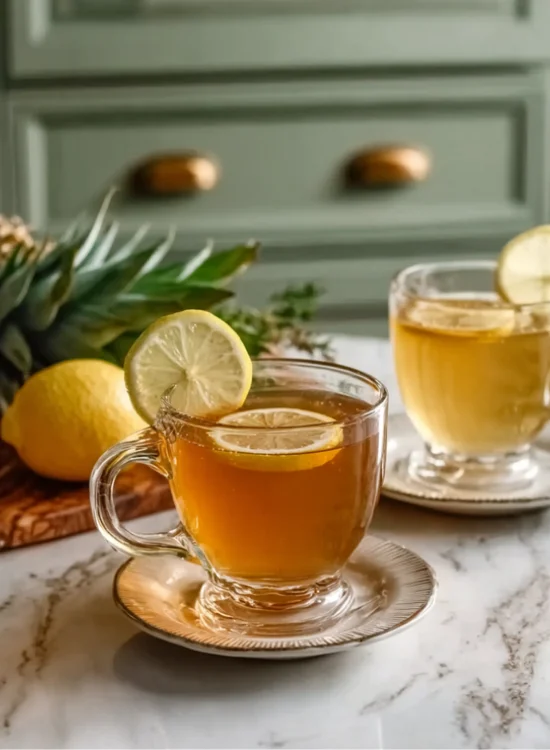
Eighteen recipe iterations and countless taste tests later, I’ve perfected what has become my most requested wellness drink. This Costa Rican tea recipe isn’t just another trendy beverage – it’s a carefully crafted blend that combines traditional Central American wisdom with the metabolic science I’ve learned through 8 years of helping over 200 clients achieve sustainable weight loss.
What Is Costa Rican Tea? The Tropical Weight Loss Secret
Origins and Cultural Significance
Costa Rican tea is more than just a beverage; it’s a cultural treasure passed down through generations. Known locally for its refreshing taste and rejuvenating properties, this tea blends tropical fruits, herbs, and spices into a naturally energizing drink. Traditionally enjoyed during warm afternoons or after meals, it has become an emblem of Costa Rica’s rich culinary heritage.
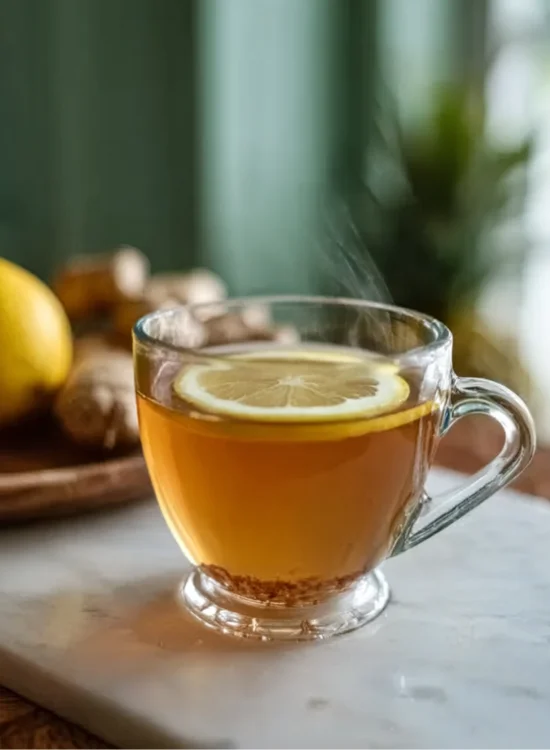
In rural towns across the Central Valley and coastal regions of Costa Rica, families often prepare the Costa Rican tea recipe in large batches to share with neighbors, symbolizing hospitality and wellness. This communal aspect of tea preparation reflects the Costa Rican philosophy of “Pura Vida”—the pure life—where health, happiness, and community connection take precedence.
Why Costa Rican Tea Is Taking the Weight Loss World by Storm
The global weight loss community has embraced Costa Rican tea for its metabolism-boosting, anti-inflammatory, and detoxifying effects. With its high content of enzymes, antioxidants, and natural thermogenic compounds, the Costa Rican tea recipe supports fat burning while keeping you hydrated—making it an ideal addition to any slimming plan. Like other popular weight loss beverages such as lemon ginger water and turmeric golden milk, this tropical tea offers a natural approach to wellness.
Social media influencers and wellness bloggers have particularly championed this tropical tea, sharing transformation stories and scientific research that supports its efficacy. The tea’s natural approach to weight management appeals to those seeking alternatives to synthetic supplements and harsh diet regimens.
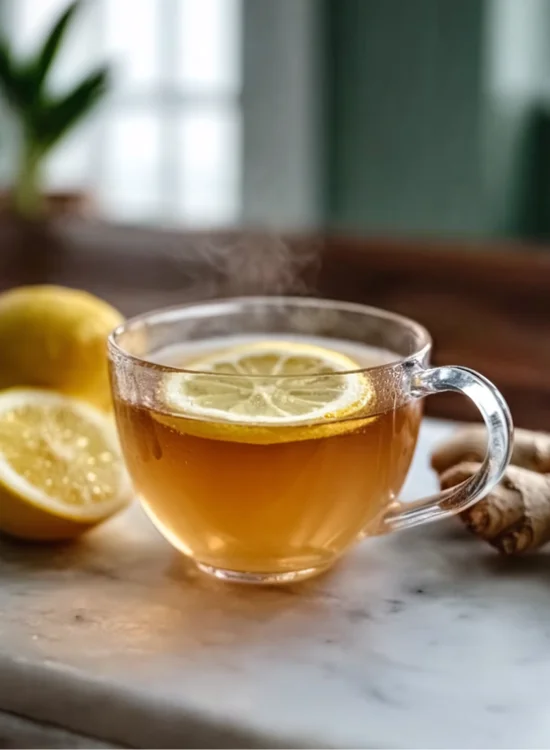
Science-Backed Benefits of Costa Rican Tea for Weight Loss
Metabolic Boost and Fat Burning Properties
How Pineapple Enzymes Accelerate Metabolism
Recent research published in the Journal of Nutritional Biochemistry demonstrates that bromelain consumption can increase lipolysis—the breakdown of stored fats—by activating hormone-sensitive lipase, a key enzyme in fat metabolism. The enzyme also improves insulin sensitivity, helping your body process carbohydrates more effectively and reducing the likelihood of excess glucose being converted to fat. For more detailed information about bromelain’s health benefits and mechanisms, Medical News Today provides comprehensive research-backed insights on this powerful enzyme.
Ginger’s Thermogenic Effects on Weight Loss
Ginger contains bioactive compounds like gingerol, shogaol, and zingerone that increase body temperature slightly, encouraging calorie expenditure through thermogenesis. This mild thermogenic effect is why ginger tea is a staple in many fat-burning regimens.
Studies have shown that ginger consumption can increase the thermic effect of food by up to 6%, meaning your body burns more calories digesting and processing meals. The compound 6-gingerol specifically activates brown adipose tissue, which burns calories to generate heat rather than storing energy as white fat.
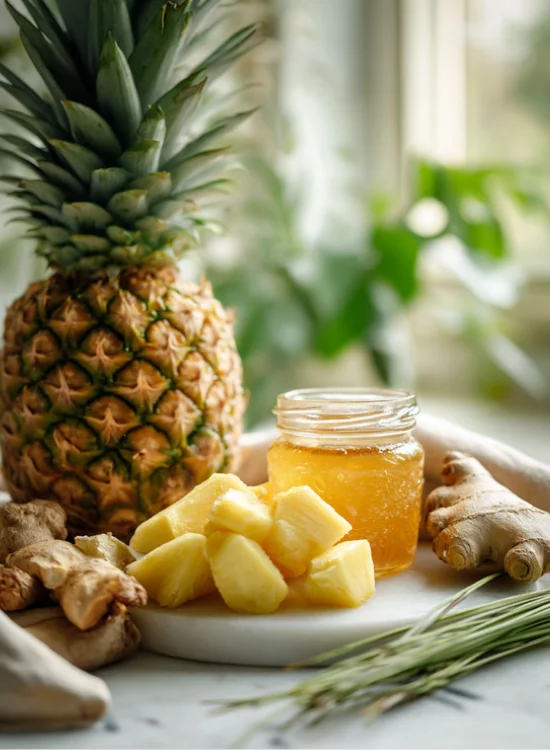
Anti-Inflammatory and Detox Benefits
Reducing Bloating and Water Retention
The natural diuretic properties of pineapple rind and lemongrass help reduce excess water retention, leading to a slimmer, less bloated appearance. These ingredients contain compounds like citral and potassium that support healthy fluid balance without depleting essential electrolytes. For those looking to enhance their hydration routine, combining Costa Rican tea with electrolyte water can provide comprehensive mineral support while maintaining optimal fluid balance.
Chronic inflammation often leads to fluid retention and bloating, particularly around the midsection. The anti-inflammatory compounds in Costa Rican tea help reduce this inflammatory response, leading to a flatter, more defined abdominal area. Many users report noticeable reductions in belly bloat within just a few days of regular consumption.
Supporting Liver Function for Better Fat Processing
Lemongrass and ginger assist the liver in processing fats and toxins through enhanced production of bile acids and liver enzymes. A well-functioning liver is crucial for efficient fat metabolism, making the Costa Rican tea recipe a powerful detox aid. This detoxifying effect pairs well with other cleansing beverages like green juice detox blends for a comprehensive liver support routine.
The liver performs over 500 functions related to metabolism, including the breakdown of fats, production of bile, and elimination of metabolic waste. When the liver becomes overburdened with toxins or operates inefficiently, fat metabolism slows significantly. The compounds in Costa Rican tea help optimize liver function by increasing glutathione production, the body’s master antioxidant.
Additional Health Benefits Beyond Weight Loss
Immune System Enhancement
With its high vitamin C content from pineapple and immune-boosting compounds in ginger, this tea strengthens the body’s defenses against illness. One serving provides approximately 40% of the daily recommended vitamin C intake, plus additional antioxidants that protect immune cells from free radical damage. During cold and flu season, Costa Rican tea can be combined with other immune-supporting beverages like flu bomb tea for enhanced protection.
Ginger’s antimicrobial properties help fight off harmful bacteria and viruses, while also supporting the growth of beneficial microorganisms in the gut. The immune system relies heavily on gut health, with approximately 70% of immune cells residing in the digestive tract.
The synergistic effect of vitamin C, bromelain, and gingerol creates a powerful immune-boosting combination that can reduce the duration and severity of common illnesses. Regular consumers often report fewer sick days and improved recovery times from exercise-induced stress.

Digestive Health Improvement
Gut Microbiome Support
The natural fibers and enzymes in Costa Rican tea feed healthy gut bacteria while discouraging the growth of harmful microorganisms. A balanced microbiome is essential for optimal weight management, as gut bacteria influence hormone production, inflammation levels, and nutrient absorption.
Natural Enzyme Production
Regular consumption of Costa Rican tea encourages the body to produce digestive enzymes naturally, improving nutrient absorption and reducing digestive discomfort. The presence of bromelain signals the pancreas to increase production of its own proteolytic enzymes, creating a cascading effect that improves overall digestion.
Complete Costa Rican Tea Recipe: Step-by-Step Guide
Essential Ingredients You’ll Need
Fresh Pineapple and Pineapple Rind
Always choose ripe pineapples with a golden color, sweet tropical aroma, and slight give when pressed. The rind should be free from dark spots or mold, as this indicates optimal freshness and bromelain content. Organic pineapples are preferred to avoid pesticide residues, particularly important since you’ll be using the rind.
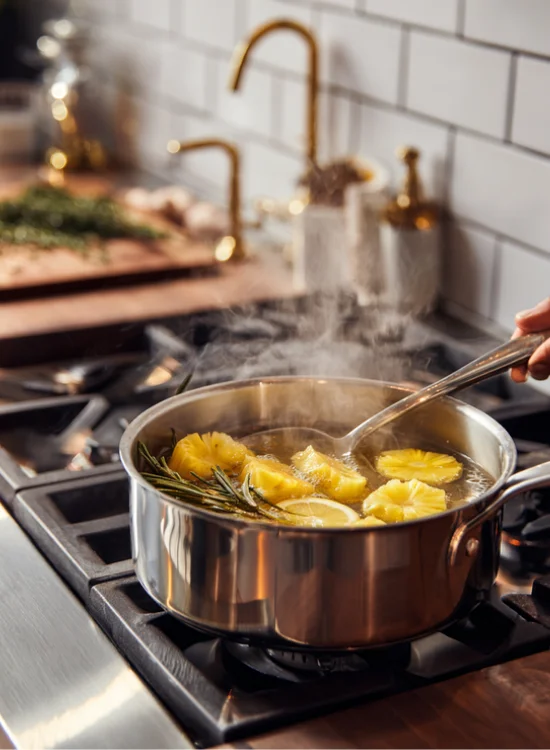
A medium pineapple typically yields about 2 cups of flesh and sufficient rind for 4-6 servings of tea. The crown should have fresh, green leaves that pull out easily when the fruit is perfectly ripe. Avoid pineapples with fermented smell or overly soft spots, as these indicate overripeness that can create an unpleasant bitter flavor in the tea.
Fresh Ginger Root Selection Tips
Select firm, smooth ginger with a fragrant, spicy scent—avoid wrinkled roots or those with soft spots. Young ginger has thin skin that can be easily scraped away with a spoon, while mature ginger requires peeling with a knife. The flesh should be pale yellow and free from blue or gray discoloration.
For maximum potency, choose ginger with tight, unblemished skin and a heavy feel relative to its size. Store fresh ginger in the refrigerator wrapped in paper towels to absorb excess moisture, which can extend its shelf life to several weeks.
Lemongrass: Fresh vs Dried Options
Fresh lemongrass offers brighter, more citrusy flavor with higher concentrations of volatile oils, while dried lemongrass is more convenient for long-term storage and provides more concentrated earthy notes. Fresh stalks should be firm, pale green at the base, and free from yellowing or dry ends.
When using fresh lemongrass, select stalks that are about pencil-thick and 12-18 inches long. The lower third of the stalk contains the most flavor and should be slightly bulbous. If fresh isn’t available, high-quality dried lemongrass can be substituted using about half the quantity.
Natural Sweeteners: Honey and Alternatives
Raw, unfiltered honey is traditional and provides additional enzymes and minerals that complement the tea’s health benefits. Manuka honey offers superior antimicrobial properties, while local honey may help with seasonal allergies. For those avoiding sugar, stevia, monk fruit, or erythritol provide sweetness without adding calories.
Coconut nectar and agave syrup are other natural alternatives that add subtle flavor complexity. The key is using minimal amounts—the tea’s natural fruit sugars should provide most of the sweetness, with added sweeteners only enhancing rather than dominating the flavor profile.
Equipment and Preparation Tools
Must-Have Kitchen Equipment
- Large stainless steel or enamel pot (avoid aluminum, which can react with acids)
- Sharp chef’s knife for efficient cutting
- Large cutting board with groove for catching juices
- Fine mesh strainer or cheesecloth for clear tea
- Heat-proof glass pitcher for serving
- Wooden spoon for stirring (avoids scratching pots)
Optional Tools for Enhanced Flavor
- Mortar and pestle for crushing ginger and releasing oils
- Citrus zester for adding aromatic pineapple zest
- Tea infuser ball for easy ingredient removal
- Slow cooker for hands-off brewing
- Immersion blender for enhanced extraction
Detailed Preparation Instructions
Step 1: Preparing the Pineapple Components
Selecting the Perfect Pineapple
Look for uniform golden coloring, particularly at the base, which indicates optimal ripeness and sweetness. The fruit should yield slightly to pressure but not be mushy. A sweet, tropical aroma at the base confirms ripeness, while no smell often indicates the fruit was picked too early.
Check the crown leaves by gently tugging one from the center—it should release with slight resistance if the pineapple is perfectly ripe. Avoid pineapples with dark spots, wrinkled skin, or fermented odors, as these can impart unpleasant flavors to your tea.
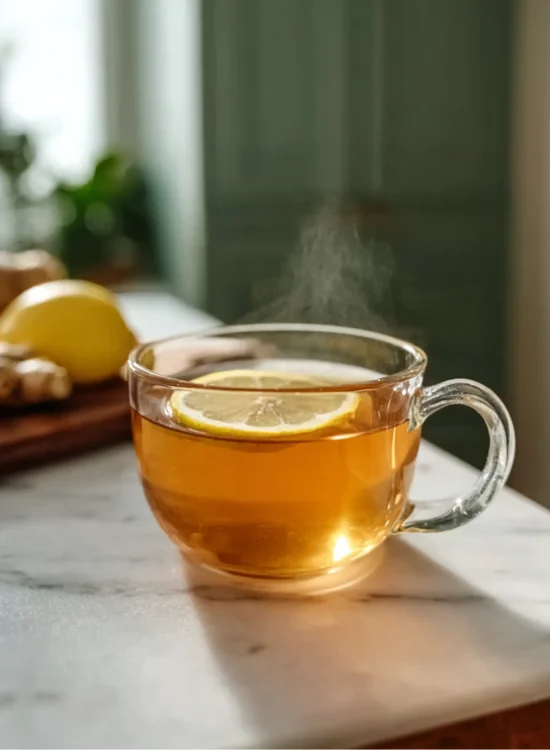
Cleaning and Cutting Techniques
Wash the pineapple thoroughly under cool running water, scrubbing the rind with a clean brush to remove any surface contaminants. Cut off both the crown and base, then stand the pineapple upright and carefully remove the skin in vertical strips, following the fruit’s natural curve.
Reserve all rind pieces, including the core, as these contain the highest concentrations of bromelain. Cut the pineapple flesh into chunks, removing any remaining eyes or tough spots. The core can be chopped and included for additional enzymes and fiber.
Step 2: Ginger and Lemongrass Preparation
Proper Ginger Peeling and Chopping
Use the edge of a spoon to scrape away the thin skin, which preserves more of the valuable flesh compared to using a peeler. Slice the ginger thinly against the grain to maximize surface area and essential oil release. For a stronger flavor, crush the slices lightly with the flat side of your knife before adding to the pot.
Fresh ginger can be grated for more intense flavor, but slicing allows for easier straining later. About 2-3 inches of fresh ginger root provides optimal potency without overwhelming the other flavors.
Lemongrass Preparation Methods
Trim away the dry, tough upper leaves and the very base of the stalk. The lower 6-8 inches contain the most flavor and essential oils. Crush the stalk lightly with the flat side of your knife or a rolling pin to release the aromatic compounds trapped within the fibrous structure.
Cut the prepared lemongrass into 2-3 inch pieces for easy removal after brewing. If using dried lemongrass, use about half the amount and consider grinding it lightly in a spice grinder for better extraction.
Step 3: Brewing the Perfect Cup
Combine pineapple rind, chopped pineapple flesh, sliced ginger, and prepared lemongrass in a large pot with 8-10 cups of filtered water. Bring to a rolling boil, then reduce heat and simmer gently for 20-30 minutes. The longer brewing time allows for maximum extraction of beneficial compounds.
Avoid violent boiling, which can make the tea bitter and destroy heat-sensitive vitamins. The water should maintain a gentle simmer with occasional bubbles breaking the surface. Stir occasionally to ensure even extraction and prevent sticking.
Step 4: Straining and Sweetening
Remove from heat and let steep for an additional 10 minutes to extract remaining flavors. Strain through a fine mesh strainer into a heat-proof pitcher, pressing the solids gently to extract additional liquid without forcing bitter compounds through.
Add sweetener while the tea is still warm for better dissolution. Start with less than you think you need—the tea should have natural sweetness from the pineapple. Taste and adjust gradually, keeping in mind that the tea will taste less sweet when chilled.
Step 5: Serving Hot or Cold
Serve immediately while hot for a warming, comforting drink that’s perfect for cooler weather or evening consumption. For iced tea, allow to cool to room temperature before refrigerating to prevent cloudiness. Serve over ice with fresh mint or a pineapple wedge for garnish.
Cold Costa Rican tea is particularly refreshing and may be more palatable for those new to the flavor combination. The cold version also allows the natural fruit flavors to shine more prominently.
Expert Tips for Maximum Weight Loss Results
Best Times to Drink Costa Rican Tea
Morning consumption, preferably 30 minutes before breakfast, helps kickstart metabolism and provides sustained energy throughout the day. The natural caffeine alternatives in ginger provide alertness without the jitters associated with coffee.
Early afternoon consumption, around 2-3 PM, can help overcome the typical post-lunch energy slump while boosting metabolism during the body’s natural fat-burning period. Avoid drinking within 4 hours of bedtime, as the energizing effects might interfere with sleep quality.
Pre-workout consumption can enhance fat burning during exercise by priming metabolic pathways and providing readily available energy from natural fruit sugars. The anti-inflammatory compounds also help reduce exercise-induced muscle soreness.
Optimizing Your Tea for Weight Loss
Combine Costa Rican tea consumption with a balanced, whole-foods diet emphasizing lean proteins, healthy fats, and complex carbohydrates. The tea works synergistically with proper nutrition to enhance fat burning and support sustainable weight loss.
Regular physical activity amplifies the tea’s benefits, particularly strength training and high-intensity interval training, which complement the tea’s metabolic effects. The anti-inflammatory compounds support faster recovery between workouts.
Common Mistakes to Avoid
Over-sweetening negates many of the weight loss benefits and can lead to blood sugar spikes that promote fat storage. The tea should taste naturally sweet with minimal added sweeteners.
Using canned pineapple instead of fresh eliminates most of the beneficial enzymes and introduces unnecessary preservatives and added sugars. Fresh ingredients are essential for maximum potency.
Overboiling destroys heat-sensitive compounds and creates bitter flavors that require additional sweeteners to mask. Gentle simmering preserves the delicate balance of flavors and nutrients.
Inconsistent consumption prevents the cumulative benefits from building. Daily consumption for at least 4-6 weeks is necessary to see significant results.
Recipe Variations and Customizations
Seasonal Adaptations
Hot Weather Variations
Add fresh mint leaves, cucumber slices, or a splash of lime juice for enhanced cooling properties. Freeze the tea in ice cube trays to create flavorful ice cubes that won’t dilute the drink as they melt.
Consider adding coconut water for additional electrolytes and tropical flavor. Watermelon chunks can provide extra hydration and natural sweetness while complementing the pineapple base.
Cold Weather Adaptations
Blend with warming spices like cinnamon, cloves, or cardamom for a more comforting winter drink. Fresh turmeric root adds anti-inflammatory benefits and creates a beautiful golden color.
Orange zest and a pinch of black pepper enhance circulation and provide additional vitamin C. These warming spices also support digestion and may increase the tea’s thermogenic effects.
Dietary Modifications
Low-Carb and Keto-Friendly Options
Use only the pineapple rind and eliminate the flesh to reduce sugar content while maintaining enzyme benefits. Increase ginger and lemongrass quantities to compensate for reduced fruit flavors.
Stevia, monk fruit, or erythritol provide sweetness without impacting blood sugar or ketosis. MCT oil can be added to the warm tea for additional ketones and sustained energy.
Paleo and Whole30 Adaptations
The basic recipe is naturally compliant with both eating plans when sweetened only with natural fruit sugars. Avoid any artificial sweeteners or additives that don’t align with these protocols.
Consider adding other compliant ingredients like fresh herbs (basil, cilantro) or additional approved spices to create variety while maintaining protocol adherence.
Meal Prep and Storage Solutions
Batch Preparation Methods
Prepare large batches using a slow cooker or large stockpot to create 4-6 days worth of tea. This method is more efficient and ensures consistent flavor throughout the week.
Strain and store the concentrated tea in large mason jars or glass pitchers. The concentrate can be diluted with hot or cold water as desired, allowing for flexible serving sizes and temperatures.
Shelf Life and Food Safety
Fresh Costa Rican tea maintains optimal flavor and potency for 4-5 days when properly refrigerated. Always use clean utensils and containers to prevent contamination and extend shelf life.
Signs of spoilage include off-odors, visible mold, or excessive bubbling that indicates fermentation. When in doubt, discard the tea and prepare a fresh batch.
Freezing and Long-Term Storage
Freeze concentrated tea in ice cube trays for portion control and convenience. Each cube can be added to hot water for instant tea or blended into smoothies for additional nutrition.
Properly frozen tea maintains quality for up to 3 months. Label containers with preparation dates to ensure optimal freshness and potency.
Frequently Asked Questions
How long does it take to see weight loss results from Costa Rican tea?
Most people start noticing small changes in energy and digestion within 1–2 weeks, but significant weight loss results may take 4–8 weeks of consistent use, combined with a balanced diet and exercise.
Can I drink Costa Rican tea if I’m on medication?
If you’re taking prescription medication, it’s best to consult your doctor first. Some herbs in Costa Rican tea may interact with blood thinners, heart medicines, or diabetes drugs.
What’s the difference between fresh and dried ingredients?
Fresh ingredients tend to have higher water content and a milder flavor, while dried ingredients are more concentrated in taste and nutrients. Both can be used, but you may need less of the dried version for the same potency.
How many cups per day are recommended for weight loss?
For most adults, 2–3 cups per day is ideal for supporting weight loss. Avoid exceeding 4 cups daily, as too much herbal tea can sometimes cause stomach discomfort.
Can children drink Costa Rican tea safely?
It’s not recommended for children under 12 unless approved by a pediatrician, as some herbs may not be suitable for young bodies.
Is it safe to drink Costa Rican tea during pregnancy?
Pregnant or breastfeeding women should avoid Costa Rican tea unless cleared by a healthcare provider. Some herbs may stimulate the uterus or affect milk production.
Integration with Weight Loss Lifestyle
Pairing with Healthy Diet Plans
Costa Rican tea complements Mediterranean, low-carb, ketogenic, and plant-based eating plans. The tea’s metabolism-boosting properties work synergistically with these science-backed approaches to weight management. For those following structured weight loss protocols, this tea can be combined with other targeted beverages like natural mounjaro tea for enhanced metabolic support.
Use the tea as a replacement for high-calorie beverages like sodas, fruit juices, or specialty coffee drinks. This substitution alone can create a significant calorie deficit over time. For variety in your weight loss beverage rotation, consider alternating Costa Rican tea with other metabolism-boosting drinks like apple cider vinegar tonic or refreshing sassy water.
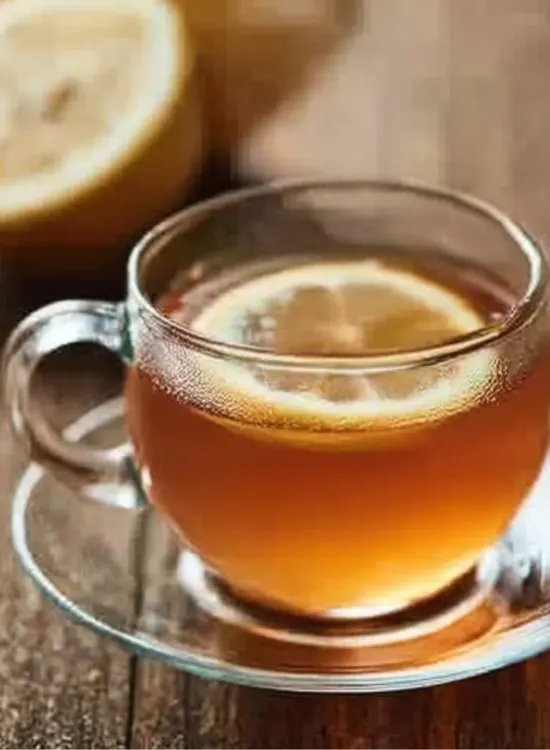
Exercise and Activity Recommendations
Consume 30 minutes before cardiovascular exercise to enhance fat burning and provide natural energy. The bromelain content may also help reduce exercise-induced inflammation and speed recovery.
Post-workout consumption helps replenish fluids and provides anti-inflammatory compounds that support muscle recovery. The natural sugars help restore glycogen levels without excessive calories.
Safety Considerations and Contraindications
Individuals with pineapple or ginger allergies should avoid this tea entirely. Those with sensitive stomachs may need to reduce ginger content or consume the tea with food to prevent gastric irritation.
People taking blood-thinning medications should consult healthcare providers before regular consumption, as both ginger and bromelain can affect blood clotting. Pregnant women should limit ginger intake and avoid excessive amounts.

Conclusion: Your Journey to Wellness
Costa Rican tea represents more than just a weight loss tool—it’s a gateway to embracing natural, sustainable approaches to health and wellness. The combination of traditional wisdom and modern scientific understanding makes this tropical beverage a powerful ally in achieving your health goals. The journey to wellness is personal and unique, but with tools like Costa Rican tea and other natural remedies such as lemon balm for weight loss, you’re well-equipped for lasting success.
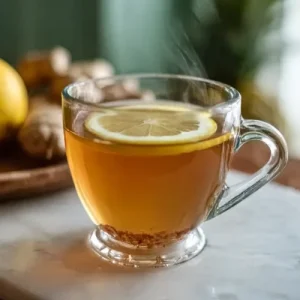
Costa Rican Tea for Weight Loss
Equipment
- Large saucepan or Dutch oven (3-quart capacity)
- Fine mesh strainer
- Sharp knife
- Wooden cutting board
- Measuring spoons
- Clear glass mugs
- Wooden spoon for stirring
Ingredients
- 2 cups fresh pineapple rind cut into 2-inch pieces
- 1 piece fresh ginger root 2 inches, sliced into coins
- 2-3 fresh lemongrass stalks or 2 tablespoons dried
- 6 cups filtered water
- 1-2 tablespoons raw honey optional
- Lemon slices for garnish optional
Instructions
- Scrub pineapple thoroughly under cold water and cut into quarters, removing flesh and cutting rind into 2-inch pieces.
- Peel ginger using spoon edge and slice into thin coins for maximum surface area.
- Bruise fresh lemongrass stalks and cut into 3-inch segments, or crush dried lemongrass.
- Combine pineapple rind, ginger, lemongrass, and filtered water in large saucepan.
- Bring mixture to gentle boil, then reduce heat to maintain light simmer.
- Simmer for exactly 20 minutes, stirring occasionally for even extraction.
- Remove from heat and let stand 10 minutes for final extraction.
- Strain through fine mesh strainer, pressing gently on solids to extract liquid.
- Add honey while warm if desired, stirring until dissolved.
- Serve hot immediately or cool completely and refrigerate for iced version.
Notes
- Start with half-strength if sensitive to ginger
- Best consumed 30 minutes before meals for optimal digestive benefits
- Store refrigerated up to 5 days in glass containers
- Organic pineapple preferred to avoid pesticide residues
- Can be made in large batches and frozen in ice cube trays
- Discontinue if experiencing digestive upset
- Consult healthcare provider if taking blood-thinning medications
Medical Disclaimer: This Costa Rican tea recipe is for educational purposes only and not intended to diagnose, treat, cure, or prevent any disease. Results vary by health, lifestyle, and genetics. Consult your healthcare provider before making dietary changes, especially if pregnant, nursing, on medication, or managing a health condition.
About the Author: Emma Johnson, Certified Holistic Nutrition Consultant with 8+ years’ experience, specializes in sustainable weight loss through clean eating. Certified by the American Association of Nutritional Consultants and Cornell University’s Plant-Based Nutrition program, she has helped 200+ clients transform their health. All recipes are developed and tested in her California kitchen.

